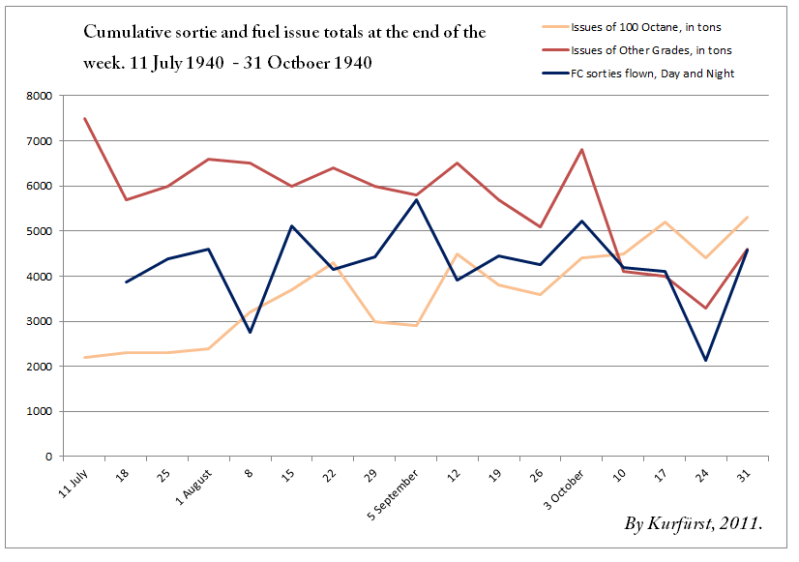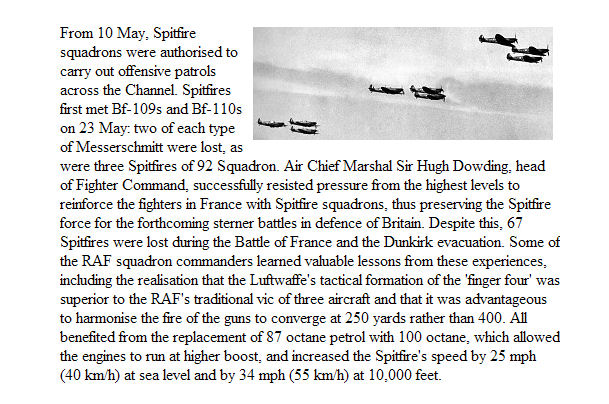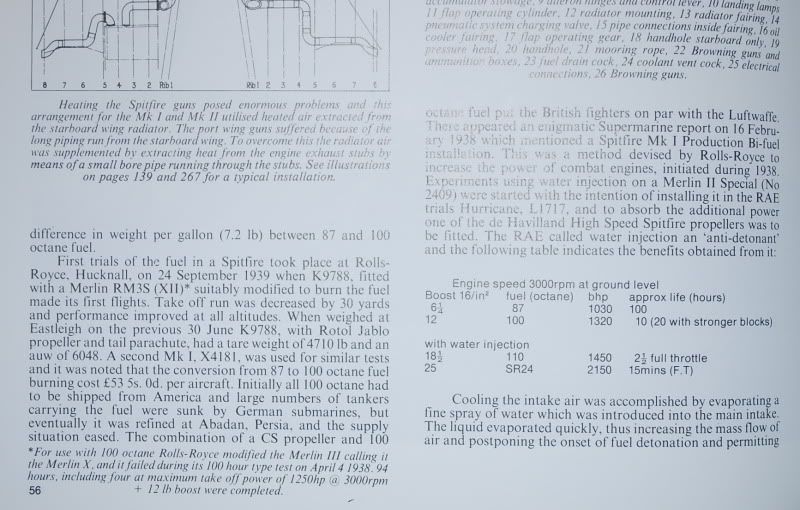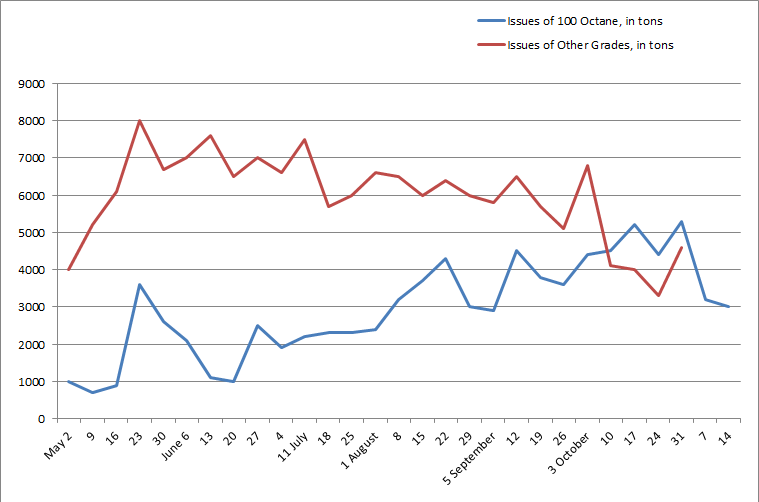
 |
|
|||||||
| FM/DM threads Everything about FM/DM in CoD |
 |
|
|
Thread Tools | Display Modes |
|
|
|
#1
|
||||
|
||||
|
Quote:
Stop editorializing what you think Kurfurst is doing (Kurfurst is desperate, etc) it only serves to make you look petty, petulant, and juvenile. Indeed from reading your postings at ww2aircraft.net that is the conclusion to which I have come about your character. In any case, I'm still reading the two threads and have yet to come across any definitive proof that RAF aircraft were 100% equipped with 100 octane at all times. I'm willing to be persuaded but that has not yet occurred. |
|
#2
|
||||
|
||||
|
Kurfurst,
Could you kindly post a link to this article written by the australian author directly? I have been waiting almost 2 weeks for my account at allaboutwarfare.com to be activated but it hasn't happened yet. |
|
#3
|
|||
|
|||
|
Data of the Fiat G.50 Freccia.
Weight(MTOW): 2402 kg Empty weight: 1963 kg Max speed: 472 kph/5000m Cruise speed: 415 kph Range: 670km Ceiling: 10,700m Climb rate: 6000m in 7'30'' ,5000m in 6'3'' Weapons: 2x Breda SAFAT with 150 rounds p/gun Gunsight Type S.Giorgio at riflesione Ammo: Counter included in panel Fire system: Warning light, extintor at biossido di carbonio. Radio: ARC 1 Fuel: 260 l(provision for 52 l of aux fuel in a fuselage tank) Power: Engine Fiat A.74 RC, radial, 14 cylinders 740 HP in take off. 840 HP with 2400rpm at 4000m 879 HP with "+100"(WEP) Propeller: Hamilton Standard 3D-41-1, constant speed, passo variabile Misc: In panel/cockpit: Carburator heat switch, gear indicators, fire warning light, compressed air indicators, ammo counter, engine instruments, compass, cowling flaps selector, Flaps lever, parking brake lever. Other: The G.50 turn well to the right but less satisfactory to the left . Stall with 125 to 130 kph. Exit of stall with turn to the right. Dates from: "Fiat G.50 Le Macchine e la Storia, Stem Mucchi, Modena-Italia" Last edited by Danelov; 06-17-2011 at 07:17 AM. |
|
#4
|
|||
|
|||
|
Quote:
Quote:
The most interesting part is that "Pips" found this well before, in 2004 or earlier, and it agrees with every single document Neil managed to dig up afterwards, though Neil and now Glider tries to discredit this research with whatever means, basically calling Pips a liar behind his back at every opportunity, but never to his face.. The problem is, if Pip would have made it up, he was extremely talented, because Pips information from 2004 - for example that the large scale fighter conversion begun in late September 1940 - agrees perfectly with what Neil found in British archives in 2009 about 87 vs 100 octane consumption rates (and then waited two years before publishing it, as it was obviously not very helpful to his own thesis). Note that as per the consumption figures, 100 octane did not become the main fuel until late September 1940, just like Pips stated, 7 years ago. 
__________________
Il-2Bugtracker: Feature #200: Missing 100 octane subtypes of Bf 109E and Bf 110C http://www.il2bugtracker.com/issues/200 Il-2Bugtracker: Bug #415: Spitfire Mk I, Ia, and Mk II: Stability and Control http://www.il2bugtracker.com/issues/415 Kurfürst - Your resource site on Bf 109 performance! http://kurfurst.org 
Last edited by Kurfürst; 06-17-2011 at 03:14 PM. |
|
#5
|
||||||||
|
||||||||
|
Quote:
Quote:
Quote:
The question I suggest we need to ask is If you have what is in effect a two and a half year stockpile, is this a strain, let alone a great strain on the stockpile. In my opinion it isn’t a strain at all, it’s barely noticeable Quote:
Quote:
Quote:
Quote:
Quote:
I should point out that all my comments are supported by original documentation. The posting isn't supported by anything. If the people working on the code base there scenario's on Pips posting as above, they have only themselves to blame if the adverse comments arrive. Last edited by Glider; 06-24-2011 at 09:39 PM. |
|
#6
|
|||
|
|||
|
Quote:

|
|
#7
|
||||
|
||||
|
Quote:
If you read in the July 1940 POH for the Spitfire II, it clearly lists 100 Octane as the fuel and that +12lbs is a Take Off rating and +9lbs is an Emergency rating limited for 5 minutes. |
|
#8
|
|||
|
|||
|
Mike (this time using the handle lane) already knows that for years, in fact he has seen the papers showing the early rating of +9 for All out level, but hey, he was never afraid of posting manipulating BS in order to push an agenda under various new logins..
__________________
Il-2Bugtracker: Feature #200: Missing 100 octane subtypes of Bf 109E and Bf 110C http://www.il2bugtracker.com/issues/200 Il-2Bugtracker: Bug #415: Spitfire Mk I, Ia, and Mk II: Stability and Control http://www.il2bugtracker.com/issues/415 Kurfürst - Your resource site on Bf 109 performance! http://kurfurst.org 
Last edited by Kurfürst; 06-25-2011 at 11:26 AM. |
|
#9
|
||||||||
|
||||||||
|
Quote:
Quote:
At 10 000 tons per month consumption the storage would be enough for 20 months, but this is with about 25% of the fighters and some bombers running 100 octane. Complete conversion would have meant the reserves would not be enough for more than about 5-6 months, running out by October. Morgan and Shacklady in Spitfire the History also notes the concerns about supply, and the U boot thread. In fact up to that time about 300 000 tons of oil shipments were sunk by uboots and mines.  Quote:
Quote:
So in three months the equivalent of one months of supply arrived. Do we need to make even more clear why the British were concerned about a complete conversion to 100 octane? Quote:
 Noteworthy that the consumption remains pretty much the same between May (when select Fighter Squadrons converted) and late September 1940. Quote:
Quote:
Quote:
__________________
Il-2Bugtracker: Feature #200: Missing 100 octane subtypes of Bf 109E and Bf 110C http://www.il2bugtracker.com/issues/200 Il-2Bugtracker: Bug #415: Spitfire Mk I, Ia, and Mk II: Stability and Control http://www.il2bugtracker.com/issues/415 Kurfürst - Your resource site on Bf 109 performance! http://kurfurst.org 
|
|
#10
|
|||||||||
|
|||||||||
|
I don't think so, its an error
Quote:
Quote:
Quote:
Quote:
Quote:
Quote:
27th February 1940 220,000 tons 31st May 1940 294,000 tons 11th July 1940 343,000 tons 31st August 1940 404,000 tons Stocks went up in about 6 weeks by approx 50,000 tons (May - July) and again in about 6 weeks by another 60,000 ish tons (July - August) Over this time the consumption was about 30,000 tons (Ave figure June - August) So imports over the period June to August must have been in the order of 140,000 tons (consumption plus increase in stocks). Consumption therefore was approx 17.5% of imports which is an ample margin for safety and more than enought reason to allow the use of 100 Octane to be given to all operational aircraft in all commands. It also questions Pips statement and view that the stocks were under severe strain. We need to know how he arrived at that assumption. If you want to accuse me of misrepresenting the figures and papers that I have put forward explain how you arrived at your figures and calculations. Can I ask where you got your figures for stocks and consumption as they do not match the documents shown. Where on earth did 50,000 tons a month come from for consumption? Quote:
Quote:
Quote:
Last edited by Glider; 06-25-2011 at 04:53 PM. |
 |
|
|